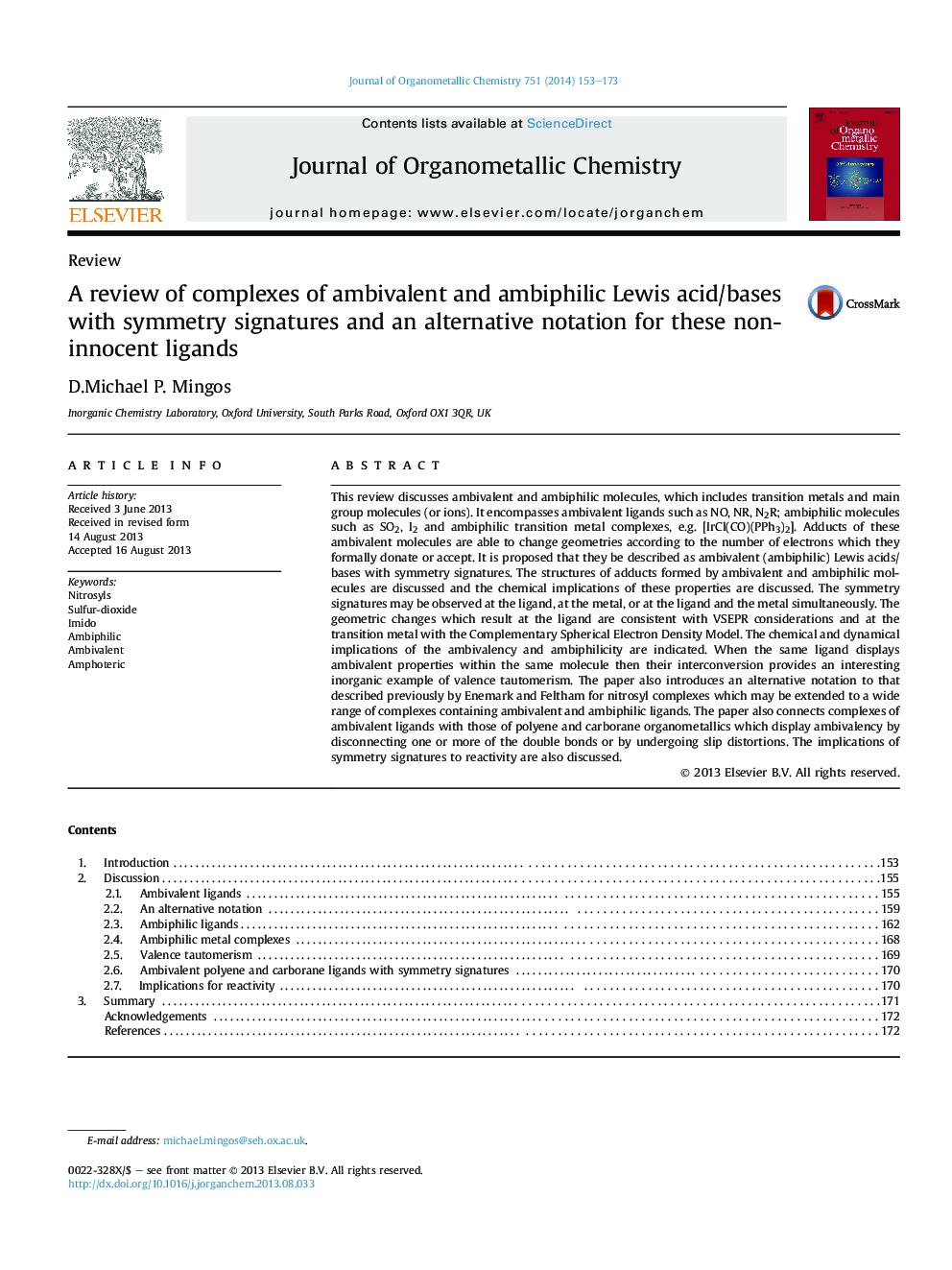| Article ID | Journal | Published Year | Pages | File Type |
|---|---|---|---|---|
| 1324270 | Journal of Organometallic Chemistry | 2014 | 21 Pages |
•The review defines sub-classes of ambivalent and ambiphilic molecules which adopt alternative geometries.•They are described as ambivalent or ambiphilic Lewis acids/bases with symmetry signatures.•The symmetry signatures may be observed only at the ligand, at the metal, or at both the ligand and the metal.•The paper describes a notation for classifying complexes of these ligands.
This review discusses ambivalent and ambiphilic molecules, which includes transition metals and main group molecules (or ions). It encompasses ambivalent ligands such as NO, NR, N2R; ambiphilic molecules such as SO2, I2 and ambiphilic transition metal complexes, e.g. [IrCl(CO)(PPh3)2]. Adducts of these ambivalent molecules are able to change geometries according to the number of electrons which they formally donate or accept. It is proposed that they be described as ambivalent (ambiphilic) Lewis acids/bases with symmetry signatures. The structures of adducts formed by ambivalent and ambiphilic molecules are discussed and the chemical implications of these properties are discussed. The symmetry signatures may be observed at the ligand, at the metal, or at the ligand and the metal simultaneously. The geometric changes which result at the ligand are consistent with VSEPR considerations and at the transition metal with the Complementary Spherical Electron Density Model. The chemical and dynamical implications of the ambivalency and ambiphilicity are indicated. When the same ligand displays ambivalent properties within the same molecule then their interconversion provides an interesting inorganic example of valence tautomerism. The paper also introduces an alternative notation to that described previously by Enemark and Feltham for nitrosyl complexes which may be extended to a wide range of complexes containing ambivalent and ambiphilic ligands. The paper also connects complexes of ambivalent ligands with those of polyene and carborane organometallics which display ambivalency by disconnecting one or more of the double bonds or by undergoing slip distortions. The implications of symmetry signatures to reactivity are also discussed.
Graphical abstractThis review defines ambivalent and ambiphilic ligands and encompasses ambivalent ligands such as NO, NR, N2R, ambiphilic molecules such as SO2, I2 and ambiphilic transition metal complexes, e.g. [IrCl(CO)(PPh3)2]. Adducts of ambivalent molecules are able to change geometries according to the number of electrons which they formally donate or accept. Figure optionsDownload full-size imageDownload as PowerPoint slide
